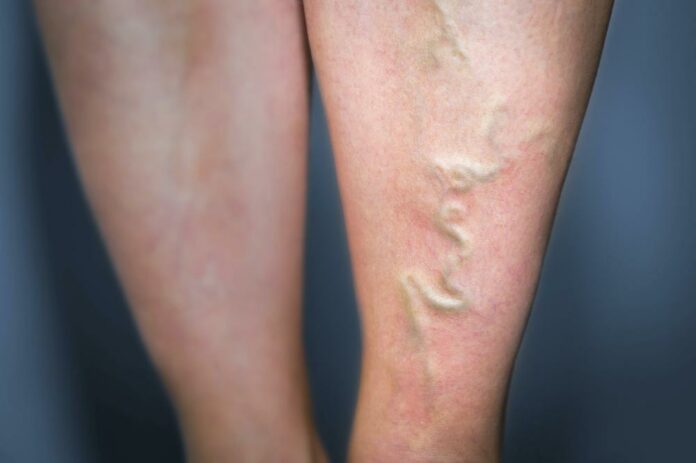Maintaining good vein health is essential for well-being. Veins play a crucial role in carrying oxygen-depleted blood back to the heart. Thus, any disruption in their function can lead to various vein diseases. This comprehensive guide aims to empower individuals in Dallas with knowledge about vein health. You will understand vein diseases and know about the available treatments.
Understanding Vein Diseases
Vein diseases encompass a range of conditions that affect the veins, such as:
– Varicose veins. They are enlarged, twisted veins that often appear on the legs.
– Spider veins. They are smaller, web-like clusters of veins visible through the skin.
– Deep vein thrombosis (DVT). DVT is a blood clot that forms in the deep veins, usually in the legs.
These conditions can cause discomfort, pain, and cosmetic concerns.
Risk factors
Risk factors for vein diseases include:
– Age
– Genetics
– Obesity
– Pregnancy
– Prolonged sitting or standing
Finding the Right Vein Specialist
Choosing a qualified vein specialist is crucial for accurate diagnosis and effective treatment. Look for a vein specialist Dallas with board-certified in vascular medicine or extensive experience treating vein diseases. Consider their:
– Credentials
– Expertise
– Patient reviews
It’s also important to find a specialist who takes the time to listen and develop a personalized treatment plan.
Vein Treatments and Procedures
Vein treatments have evolved significantly, offering a wide range of options to address different vein conditions. These treatments aim to:
– Alleviate symptoms
– Improve vein function
– Enhance the overall appearance of the affected area
Depending on the vein disease’s severity, vein specialists may recommend different approaches.
Non-invasive Treatments
Non-invasive treatments are often the first line of defense for mild cases of vein diseases. These treatments are generally:
– Safety
– Relatively painless
– Require little to no downtime
Some common non-invasive treatments include:
1. Lifestyle Modifications
In many cases, making specific lifestyle changes can positively impact vein health.
– Regular exercise. Exercise promotes blood circulation and strengthens the leg muscles, aiding in better vein function. Some exercises, such as walking or swimming, are particularly beneficial.
– Maintaining a healthy weight. An adequate weight reduces the strain on veins, as excess weight can impede proper blood flow. Incorporating a balanced diet with ample fiber and nutrients supports vascular health.
2. Compression Therapy
Compression therapy involves wearing special compression socks that apply gentle pressure to the legs. These stockings help improve blood circulation by assisting the veins in pushing blood back toward the heart. Compression therapy can:
– Reduce swelling
– Alleviate discomfort
– Prevent the progression of vein diseases.
Vein specialists often recommend compression therapy as a preventive measure for many vein conditions.
3. Sclerotherapy
Sclerotherapy is a popular non-invasive treatment for spider veins and smaller varicose veins. During the procedure, a solution is injected directly into the affected veins. This solution causes the affected vein to collapse and fade over time. The body absorbs the treated veins, gradually improving the appearance of the skin. Sclerotherapy is an effective treatment with minimal discomfort and minimal downtime.
Minimally Invasive Procedures
Minimally invasive procedures are recommended for moderate to severe cases of vein diseases. These procedures involve minor incisions or the use of advanced technologies to treat underlying vein issues. Some commonly performed minimally invasive procedures include:
1. Endovenous Laser Treatment (EVLT)
EVLT uses laser energy to seal off and close the diseased veins. A small laser fiber is inserted into the affected vein under ultrasound guidance. The laser energy heats the vein walls, causing them to collapse and seal shut. Over time, the closed vein is absorbed by the body and the blood flow is redirected to healthier veins. EVLT is highly effective for treating larger varicose veins and provides long-term results.
2. Radiofrequency Ablation (RFA)
RFA is similar to EVLT but uses radiofrequency energy instead of laser energy. A specialized catheter is inserted into the diseased vein, and the radiofrequency energy heats the vein walls. This energy causes the veins to collapse and close off. Like EVLT, the body gradually absorbs the closed vein, and blood flow is redirected to healthier veins. RFA is a highly successful treatment for varicose veins, offering a great alternative to traditional surgical procedures.
Surgical Options
In some cases, more extensive vein diseases may require surgical interventions. These procedures are typically performed under general anesthesia. They involve larger incisions to remove or tie off the affected veins physically. Some surgical options include:
1. Vein Ligation and Stripping
Vein ligation and stripping is a surgical procedure that involves tying off and removing the diseased veins through small incisions. This procedure is often reserved for severe cases of varicose veins, where other treatments have not been effective. It is performed in a hospital or outpatient surgical center under anesthesia. Vein ligation and stripping can provide long-term relief from symptoms. However, it may have a longer recovery period than minimally invasive procedures.
It’s important to note that the specific treatment plan will depend on the following:
– Individual patient factors
– The severity of the vein disease
– The recommendations of the vein specialist.
Consulting with a qualified vein specialist will ensure a tailored treatment approach that addresses your needs.
Conclusion
Empowering yourself with knowledge about vein health is the first step toward maintaining healthy veins. Understanding common vein diseases and exploring available treatments can help you take control of your vein health. By prioritizing vein health, you can enjoy improved well-being, reduced symptoms, and a better quality of life.


